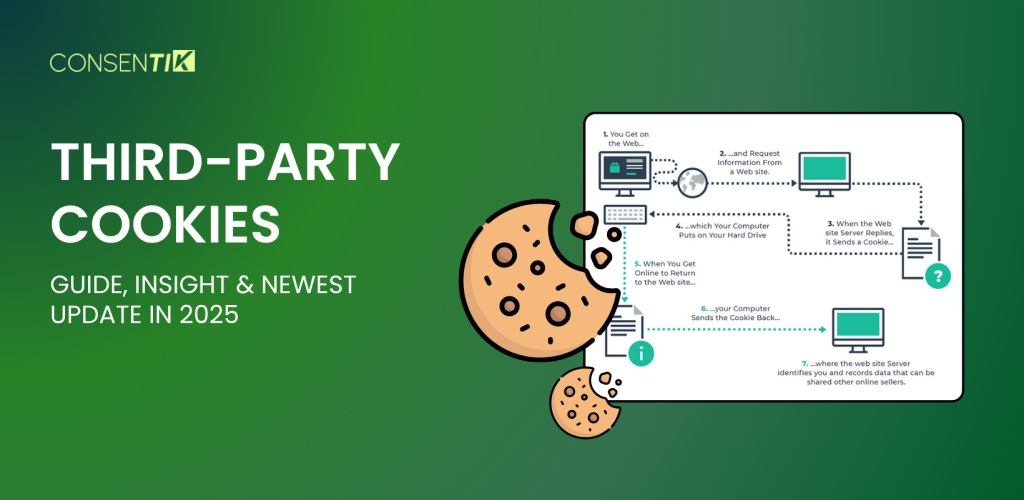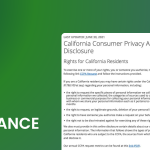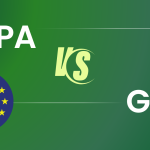You’re browsing laptops on one site, then laptop ads follow you everywhere online. That’s third-party cookies at work – invisible trackers powering today’s web advertising. If you run a website, understanding third-party cookies isn’t optional anymore. Privacy laws tighten, browsers block them, and customers demand data control. This guide covers what they are, how they work, why they’re controversial, and how to prepare your business for change.
What Are Third-Party Cookies?
Third-party cookies are small files placed on someone’s browser by a website different from the one they’re currently visiting. Think of them as digital tracking devices that follow users around the internet.
Here’s the key difference between cookie types:
- First-party cookies come directly from the website you’re on. If you visit ShopExample.com, any cookie from ShopExample.com is considered a first-party cookie. These help with basic functions like keeping you logged in or remembering your shopping cart.
- Third-party cookies come from somewhere else entirely. Even though you’re on ShopExample.com, the cookie might actually come from Google, Facebook, or an advertising network. These cookies can track you across many different websites.
The power of third-party cookies lies in their reach. While first-party cookies only know what you do on one site, third-party cookies can build a profile of your behavior across the entire web.
Why Businesses Use Third-Party Cookies
Despite privacy concerns, these cookies solve real marketing problems:
- Bring back visitors – Show ads to people who visited your store but didn’t buy anything
- Better targeting – Show fitness ads to people reading fitness blogs, kitchen products to cooking fans
- Track customer paths – See if someone clicked your Facebook ad, visited your site, then bought something later
- Control ad frequency – Stop showing the same ad 50 times to one person
- Measure what works – Figure out which ads actually lead to sales
Many businesses built their entire marketing around these cookies.
What Types of Cookies Are There?
There are three main types of cookies. Let’s break down how they work:
- First-party cookies are created by the website you’re visiting. For example, if you’re shopping on example.com, any cookies that example.com saves on your device are first-party cookies. These cookies help the site remember who you are as you browse different pages, keep track of your preferences, and save items in your shopping cart. Pretty much every website uses first-party cookies these days.
- Third-party cookies come from a different website than the one you’re on. They’re mainly used to track your activity across multiple websites and show you more relevant ads. A common example is when you see a chat support box on a website—that’s often powered by a third-party service using its own cookies.
- Second-party cookies are a bit of a gray area. Some experts argue they don’t really exist as a separate category. Essentially, second-party cookies refer to first-party cookie data that one company shares with a trusted partner. Think of it as borrowed data between business partners rather than a distinct cookie type.
How Third-Party Cookies Are Created?
Let’s look at exactly how these cookies get onto your browser. The process is simpler than you might think:
Say you visit a website called example.com that has a live chat feature. To make the chat work, the website needs to load code from the chat service provider. The HTML might look like this:
<script src="https://someservice.com/js/livechat.js"></script>When your browser loads this page, it makes a request to someservice.com to get the chat script. Along with sending back the JavaScript file, someservice.com can also set cookies on your browser. Boom – you now have third-party cookies from a website you never directly visited.
It’s not just scripts! Third-party cookies can be created whenever your browser requests anything from another domain:
- Images from content delivery networks
- Fonts from Google Fonts or other services
- CSS files hosted elsewhere
- Embedded videos from YouTube
- Social media buttons and widgets
- Analytics tracking codes
Each of these requests gives the third-party service a chance to drop cookies on your browser.
Over time, as you visit more websites that use the same third-party services, those companies accumulate data about your browsing habits. They start to know which sites you visit, what products you look at, and what content interests you.
Real Examples of Third-Party Cookies
Here are common ways third-party cookies show up on websites:
- Ads – Google ads drop cookies to track what you like, then show targeted ads on other sites
- Social buttons – Facebook “Like” and Twitter “Share” buttons track which articles you read, even if you don’t click them
- Website analytics – Google Analytics tracks visitors and connects your behavior across different websites
- Chat boxes – Live chat services remember your past conversations across different sites
- YouTube videos – Embedded videos let Google track your viewing habits and influence future recommendations
- Maps and widgets – Google Maps, weather widgets, and social feeds all drop cookies on your browser
The common thread is external content. Anytime a website loads something from another domain, that external service gets a chance to track the visitor.
How to Check if Your Website Uses Third-Party Cookies Or Not?
Want to see what cookies your website is actually setting? Here’s how to check:
Using Chrome Developer Tools
- Visit your website
- Press F12 or right-click and choose “Inspect”
- Go to the “Application” tab
- Look for “Cookies” in the left sidebar and expand it
- You’ll see your domain listed, plus any other domains setting cookies
If you see domains other than your own, those are third-party cookies.
Using a Cookie Scanner
Tools like Cookie Checker of Consentik can automatically detect all cookies on your website. Just enter your URL and get a complete report of first-party and third-party cookies, plus their purposes.
This audit is crucial for understanding what you’re actually tracking and ensuring compliance with privacy laws.
What’s Changing?
Privacy concerns are forcing big changes:
Browsers Fighting Back
- Safari – Blocks third-party cookies completely (since 2020)
- Firefox – Blocks them by default (since 2019)
- Brave – Blocks them automatically (since 2020)
These browsers handle about 35-40% of web traffic. That’s a lot of people already browsing cookie-free.
Google’s About-Face
Instead of removing cookies, Chrome will let users choose whether to allow tracking. Cookies stay, but users get more control.
New Laws
Laws like GDPR in Europe and CCPA in California now require permission before tracking people. You can’t just drop cookies anymore – you need clear consent first.
That’s why you see cookie banners everywhere now. They’re legally required, not optional. These cookie changes affect your business in several ways:
- Fewer people see your ads – More users block cookies, so your retargeting reaches fewer people
- Higher ad costs – Less tracking means less effective targeting, driving up advertising costs
- Can’t track sales – Harder to tell if your Facebook ad actually led to a purchase
- Ads perform worse – Ad platforms have less data, so targeting becomes less accurate
- Your own data matters more – Customer emails and purchase history become super valuable
You need new strategies that don’t depend on tracking people across websites.
Manage Third-Party Cookies on Your Website with Consentik
Most cookie management tools are built by developers for developers. They’re clunky, break your website, and actually hurt your conversion rates. Even worse? They often miss hidden trackers, leaving you exposed to hefty privacy law fines.
Here’s what typically goes wrong:
- Generic cookie banners that annoy users and kill conversions
- Manual setup that takes weeks and breaks constantly
- Hidden tracking that compliance tools miss completely
- No real support when privacy laws change overnight
- Expensive legal fees when you get compliance wrong
But, Consentik is different. This app is built specifically for e-commerce stores, not generic websites. While other tools require complex setup, Consentik integrates seamlessly with Shopify, Wix, Shopline and supports multiple languages to reach customers across different countries.
Our system automatically blocks tracking scripts until consent is given and provides flexible layouts with built-in templates to customize your cookie banner. Most importantly, we help boost your consent rate and ad performance with full support for Google Consent Mode V2 and accurate gcd parameter setup.
Here’s what you get that others don’t offer:
- Customizable cookie banners with flexible layouts and templates
- Advanced tracking and clear reports to analyze customer consent
- Multi-language support to reach users across different countries
- Auto-blocking of tracking scripts until consent is given
- Full IAB TCF & Google Consent Mode V2 support to optimize ad performance
The cost of getting this wrong is massive. GDPR fines go up to €20 million, CCPA penalties hit $7,500 per violation, and legal fees run $50,000+ to fight violations. Compare that to Consentik’s simple solution that actually helps improve your ad performance while staying compliant.
Consentik helps you comply with GDPR, CCPA, LGPD, and more while boosting your consent rates. Unlike generic tools that just block everything, we’re designed to increase consent rates and optimize your ad performance through proper Google Consent Mode integration.
Privacy enforcement is ramping up everywhere. Don’t wait until you’re the next target.
Third-Party Cookies FAQs
What are the alternatives to third-party cookies?
There are several alternatives to third-party cookies, you can use:
Collect Your Own Data
- Get emails through account creation, surveys, and quizzes
- Track purchase behavior on your own site
- This data stays yours no matter what happens with cookies
Contextual Advertising
- Show camping ads on outdoor blogs, not based on personal tracking
- Advertise based on website content, not browsing history
Email Marketing
- Build your email list with valuable content
- Email works great and needs zero cookies
Google’s New Tools
- Topics – Browsers guess your interests without personal tracking
- Attribution – Measures ad success without identifying individuals
- Trust Tokens – Fights fraud without invasive tracking
Other Options
- Server tracking – Move tracking to your server instead of browsers
- Login-based tracking – Track users who willingly sign in
- Universal IDs – Use hashed emails (with permission) for some cross-site recognition
Smart businesses are already trying cookie-free options. The key is using multiple methods so you’re not stuck with just one.
How to Block Cookies on a Website?
You can block third-party cookies on a website only when users say yes:
- Easy Way – Use a Tool: Services like Consentik automatically block cookies until users consent. They scan your site and stop tracking scripts from running.
- Google Tag Manager: Configure it to only fire tracking after getting permission. Gives you control over which scripts load when.
- Manual Method: Modify your website code to load third-party scripts only after consent. Requires technical knowledge but offers complete control.
Important: Don’t use multiple blocking methods – they can conflict. YouTube videos and social buttons won’t work until users opt in.
How Can I Block Cookies?
To block cookies, you must understand user controls which help you know what to expect:
Browser settings:
- Chrome – Settings → Privacy → Block third-party cookies
- Firefox – Blocks them by default
- Safari – Blocks automatically
- Edge – Privacy settings let users choose
Browser extensions:
- uBlock Origin – Blocks ads and trackers across all websites
- Ghostery – Shows you what’s tracking you and blocks it
- Privacy Badger – Automatically blocks trackers that don’t respect your privacy
Private browsing:
- Incognito mode (Chrome) or Private browsing (Firefox/Safari) typically blocks third-party cookies automatically
- Deletes all cookies when you close the private session
- Prevents websites from tracking your browsing history
Final Words
Third-party cookies changed how businesses track customers online, but privacy laws and user preferences are changing the game. Smart website owners are already preparing by collecting their own data, using contextual ads, and building real customer relationships. Don’t wait for browsers to force changes – start adapting now. Focus on creating value that makes customers want to share their information willingly, not tracking them secretly across the web.
Ready to make your website privacy-compliant?







